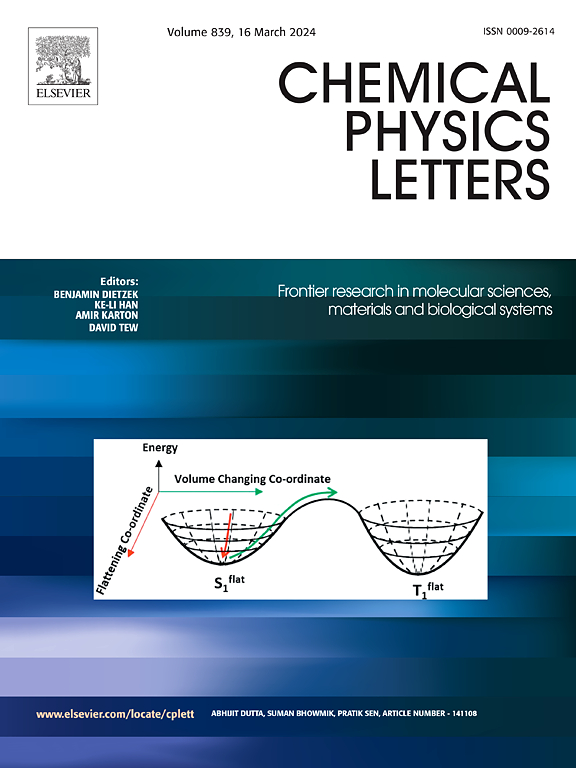Cotranscriptional folding kinetics of Cbe pfl riboswitch
IF 2.8
3区 化学
Q3 CHEMISTRY, PHYSICAL
引用次数: 0
Abstract
The function of the riboswitch is determined by the rearrangement behavior of intermediate structures that emerge during cotranscriptional folding. These folded fragments interact with ligands, alter their structure and thereby regulate gene expression. We conducted theoretical investigations into the cotranscriptional folding behavior of the Clostridium beijerinckii pfl riboswitch, both in the absence and presence of the ligand, using a computational helix-based method. To simplify conformations, we employed the Conformational Resampling through the Kinetic Relaxation (CRKR) method. We varied factors like the ligand concentration, the transcription rate, and the transcription pausing sites. Notably, we identified two different folding paths of Cbe pfl riboswitch depending on whether the ligand exists or not. It has also been investigated that the higher ligand concentration and the higher transcription rate can both enhance the formation of antiterminated structure. During the cotranscriptional pausing event, pausing at C107 and C110 can reduce the final population of the antiterminated structures while pausing at the site U85 will stabilize the formation of an important intermediate transition structure N8 The obtained results are in excellent agreement with the experimental data, and these investigations provide novel insights into the transition of conformational space during the cotranscriptional folding process of RNAs.

求助全文
约1分钟内获得全文
求助全文
来源期刊

Chemical Physics Letters
化学-物理:原子、分子和化学物理
CiteScore
5.70
自引率
3.60%
发文量
798
审稿时长
33 days
期刊介绍:
Chemical Physics Letters has an open access mirror journal, Chemical Physics Letters: X, sharing the same aims and scope, editorial team, submission system and rigorous peer review.
Chemical Physics Letters publishes brief reports on molecules, interfaces, condensed phases, nanomaterials and nanostructures, polymers, biomolecular systems, and energy conversion and storage.
Criteria for publication are quality, urgency and impact. Further, experimental results reported in the journal have direct relevance for theory, and theoretical developments or non-routine computations relate directly to experiment. Manuscripts must satisfy these criteria and should not be minor extensions of previous work.
 求助内容:
求助内容: 应助结果提醒方式:
应助结果提醒方式:


